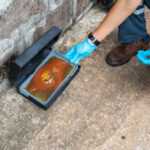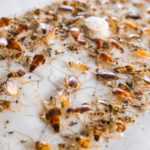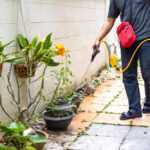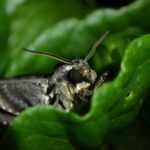Earwig Bugs: Identification & Easy Control Tips
Learn how to spot earwig bugs, understand their habits, and use simple, effective tips to keep them out of your home for good.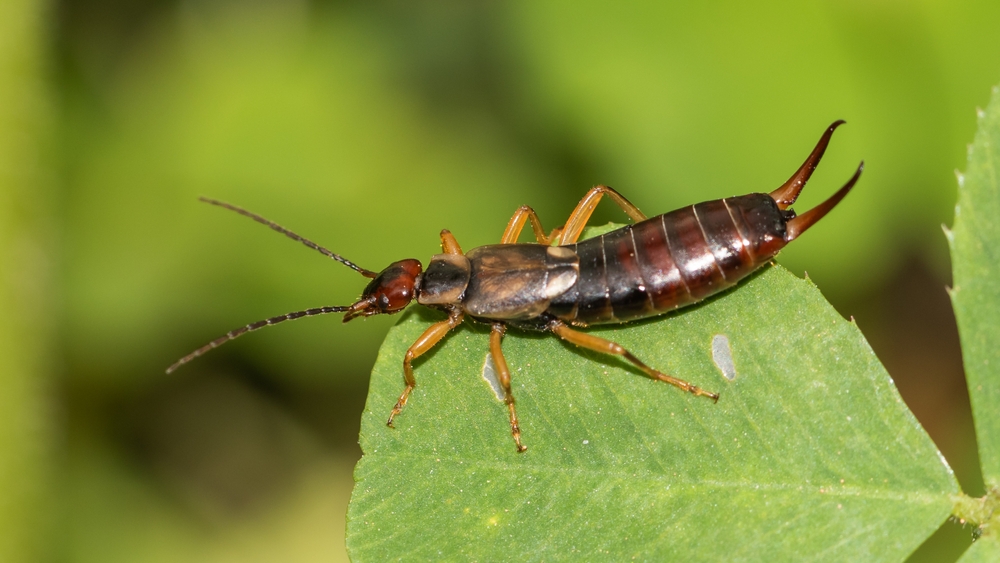
Effective Tips to Control Earwig Bugs in Your Garden
Earwigs, scientifically known as Forficula auricularia, are nocturnal insects commonly found in gardens. These insects can cause damage to garden plants and flowers, posing concerns for gardeners. This article explains what earwigs are, how to identify an infestation, and provides effective tips for controlling them.
- Earwigs are nocturnal insects that seek shelter in moist, dark hiding places and can cause significant damage to garden plants, especially soft vegetables and fruit trees.
- Early detection of infestations is crucial; signs include a foul odor from crushed earwigs and dead or damaged plants.
- Effective management involves traps, environmental modifications, encouraging natural predators, and safe insecticide use when necessary.
Understanding Earwigs
Earwigs, particularly the common earwig, are distinguishable by their reddish brown bodies, dark brown abdomens, and pale yellow-brown legs. There are several earwig species, each with unique characteristics. They measure about 5/8 inch long and have prominent pincers attached at the end of the abdomen. While male earwigs have curved pincers, female earwigs possess fairly straight ones, which helps identify the gender of these insects. Most species of earwigs possess membranous wings folded under short, hard covers, but they rarely use their wings to fly. Common earwigs are typically found outdoors in moist debris and are generally not a threat to humans or pets.
Originally from Europe, western Asia, and northern Africa, European earwigs made their way to North America, first recorded in Seattle in 1907. Earwigs generally are nocturnal creatures, seeking shelter during the day under lawn furniture, mulch, or in tree holes. They are the only stage of their life cycle that survives through winter, showing adaptability to wet weather and cold conditions.
These traits and behaviors are key to managing earwig populations. Identifying their hiding places and understanding their habits enables timely actions to safeguard your garden.
Identifying Infestations
Recognizing an earwig infestation early can save your garden from significant damage. One telltale sign is the foul odor they emit when crushed, due to a yellow-brown secretion. Dead plants or damage to flowers in your garden can also indicate their presence.
Preferring dark, damp hiding places, earwigs often shelter in moist crevices and debris-laden areas of your garden. They frequently crawl into cracks and crevices in search of shelter. Being nocturnal, they’re rarely seen during the day, but monitoring these signs can help identify an infestation.
Early detection is vital to controlling earwigs before they damage your susceptible plants extensively. Monitoring for these indicators ensures a healthy garden.
What Do Earwigs Eat?
Earwigs are omnivorous scavengers, consuming a wide range of organic materials. They eat decaying plant material, animal matter, and living plants, making them a potential threat to your garden. Earwigs are also known to feed on crops, which can be a concern for agricultural yields.
In gardens, earwigs particularly favor soft vegetables like lettuce and are attracted to flowers with tender tissues. They may also feed on overripe fruits from fruit trees, especially those that are damaged. Their opportunistic feeding habits mean they can consume various materials, including insect eggs, aphids, and other pests. Earwigs act as predators, feeding on prey such as aphids, insect eggs, and larvae, which can help control some garden pests. However, they can damage flowers and various crops, including vegetables and fruits.
Knowing their diet helps identify vulnerable garden plants and crops, enabling you to take preventive measures to protect your living plants. Also, understanding what scorpions eat in Phoenix, AZ, can help you further in your pest control strategies.
The Life Cycle of Earwigs
The life cycle consists of three stages: egg, nymph, and adult. Female earwigs lay between 30 to 60 eggs in soil during late winter. These eggs hatch into nymphs, which resemble miniature adults and undergo several molts before reaching maturity.
The first instar is the initial juvenile stage, showing basic adult features. As they grow, earwigs shed their exoskeleton in a process called molting, allowing them to expand. They may experience higher mortality rates if environmental conditions are not favorable during these molting stages. After molting, their exoskeleton hardens and darkens through sclerotization.
Earwigs exhibit aggregation behavior influenced by pheromones present in their feces, attracting both adults and nymphs. Knowledge of their life cycle allows for well-timed control measures.
Damage Caused by Earwigs
Earwigs can cause significant damage to your garden, especially the European earwig, which exhibits both predatory and phytophagous feeding habits. They create small, jagged holes in the foliage, flowers, and fruits of various plants, including vegetables and fruits. They may chew off corn silks and hide within ripe fruits like apricots and peaches, particularly near the pit.
Earwig damage can sometimes be confused with that caused by slugs and snails, but unlike slugs and snails, earwigs do not leave behind slime trails. Slugs and snails typically create smoother, irregular holes and leave visible slime, while earwig feeding results in more jagged edges.
Their nocturnal activity means you may see damage without spotting the culprits. Nighttime monitoring is necessary to catch and manage them effectively.
Managing Earwig Populations
Managing earwigs in your garden involves a combination of traps and environmental modifications. Creating vegetable oil traps using small containers filled with canola or olive oil can effectively capture earwigs. Rolled newspapers, burlap bags, or bamboo tubes can also serve as traps, helping you monitor and capture these pests. These methods can help you get rid of earwigs from your garden.
Managing irrigation to reduce moisture and eliminating hiding places like debris, weeds, and heavy ground cover can help control earwig populations. If outdoor habitats are not managed, more earwigs may invade from outside even after indoor treatments.
Implementing these strategies can help protect your garden from earwig damage and maintain a healthy plant environment.
Natural Predators of Earwigs
Birds are among the most important natural predators of earwigs, helping to control their populations. Various bird species, including robins and blackbirds, actively hunt earwigs as a food source. Toads are also effective predators, consuming many earwigs in a single night.
Ground beetles and certain spider species, such as orb-weavers and wolf spiders, can capture earwigs, although they are not their main target. Fostering these natural predators in your garden aids in maintaining a balanced ecosystem and reducing earwig numbers.
Preventing Earwig Infestations
Minimizing earwig attraction to your garden and house helps prevent infestations. Using yellow or sodium vapor bulbs for outdoor lighting and maintaining regular sanitation by removing debris, weeds, and heavy ground cover can reduce their hiding places.
During weather changes or when drawn to indoor lights, earwigs may invade houses. Sealing entry points and clearing potential harborage materials from around the building can prevent invasions. These measures can help keep earwigs at bay. Similar prevention strategies, such as sealing entry points and environmental modifications, are also effective for other pests like cockroaches.
Safe Use of Insecticides
To control earwigs with insecticides, meticulously follow label directions. Products like Ortho Bugclear Insect Killer and spinosad-based options such as SluggoPlus offer effective, environmentally friendly control.
Apply insecticides in earwig hiding places, like under mulch and leaf litter. Nighttime application and strict adherence to label directions minimize risks to beneficial insects like bees.
Dampening baits after application with soapy water can enhance their attractiveness to earwigs.
Earwig Myths and Facts
Contrary to popular belief, earwigs do not seek to enter people’s ears or lay eggs in ear canals. The myth of earwigs crawling into people’s ears dates back over a thousand years and is reflected in their name, which derives from terms meaning ‘ear crawler’.
While earwigs possess pincers, they rarely use them defensively unless provoked. They do not spread diseases, but can be a nuisance in gardens due to the damage they cause to plants, similar to other pincher bugs.
Understanding the behavior and habits of earwigs is crucial for effective garden management. Earwigs generally are not aggressive toward humans and are often misunderstood due to their appearance; clarifying their typical behavior helps address common misconceptions. By identifying signs of infestation early, knowing what they eat, and understanding their life cycle, you can take timely action to protect your susceptible plants. Natural predators and preventive measures play a significant role in keeping earwig populations under control.
If earwigs become a persistent problem, the safe use of insecticides, as guided here, can provide an effective solution. Remember, maintaining a healthy garden requires vigilance and timely interventions. For professional assistance, consider reaching out to Responsible Pest and Scorpion Control.
Frequently Asked Questions
What attracts earwigs?
Earwigs are primarily attracted to moisture, particularly in environments with damp or rotting wood, as well as around plants. Addressing moisture issues around your house can help reduce their presence.
Should you kill earwigs?
You should consider killing earwigs if they invade your house, as sealing entry points can help prevent their return. Promptly removing them through sweeping or vacuuming is an effective way to manage the issue.
How harmful are earwigs?
Earwigs are not harmful to humans; they pose no health risks and are simply a nuisance when they invade houses and gardens. Despite their intimidating appearance, they do not sting or have venom.
What are the early signs of an infestation in my garden?
The early signs of an infestation include a foul odor from crushed earwigs and the presence of these insects in dark, damp areas. Checking for these indicators can help you address the issue promptly.
What do earwigs typically eat in gardens?
Earwigs typically eat decaying plant matter, soft vegetables, tender flowers, insect eggs, aphids, and overripe fruits in gardens. Their diet contributes to the decomposition process, benefiting soil health.
